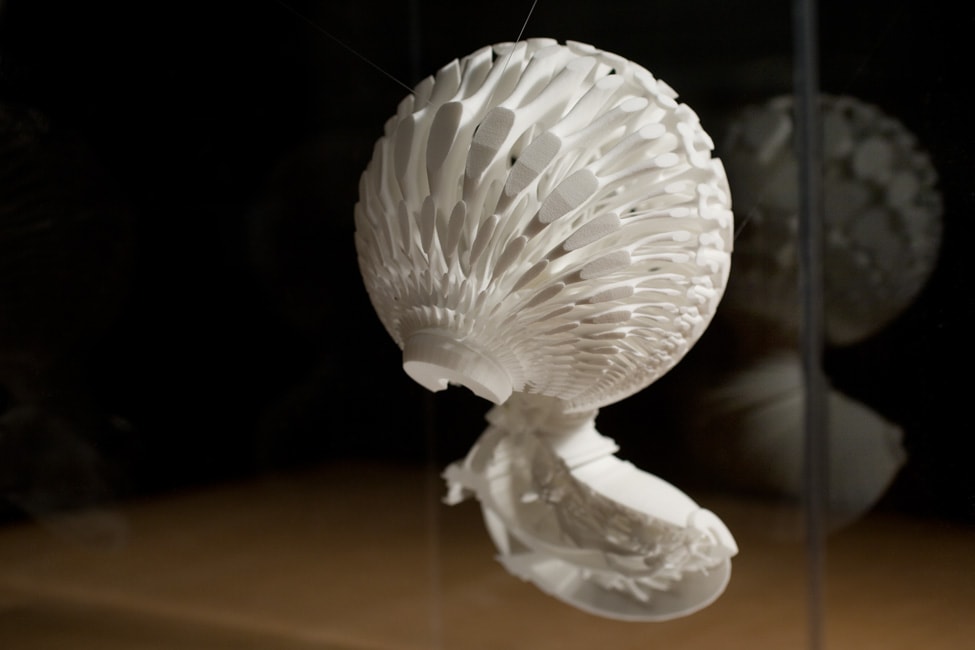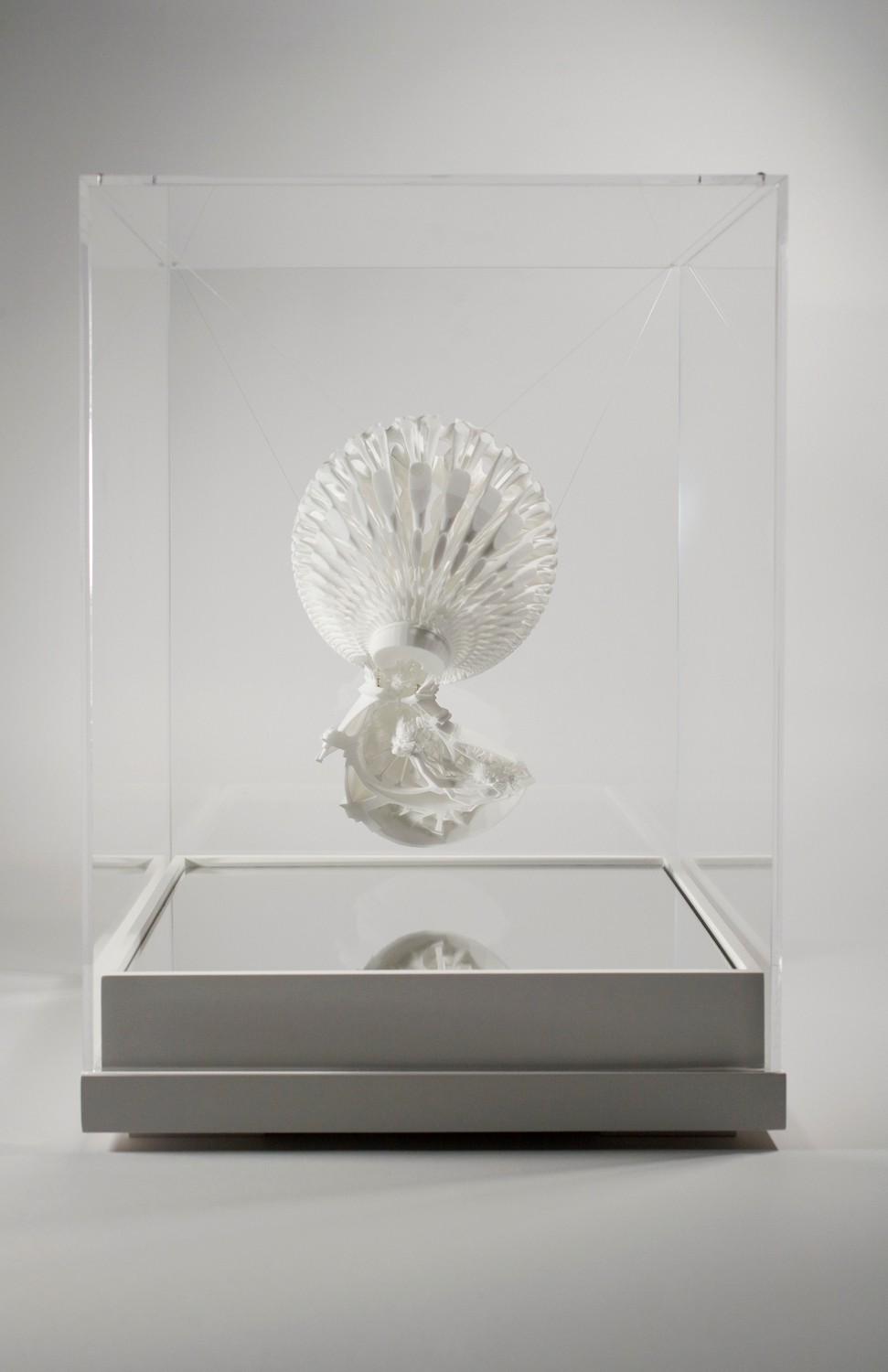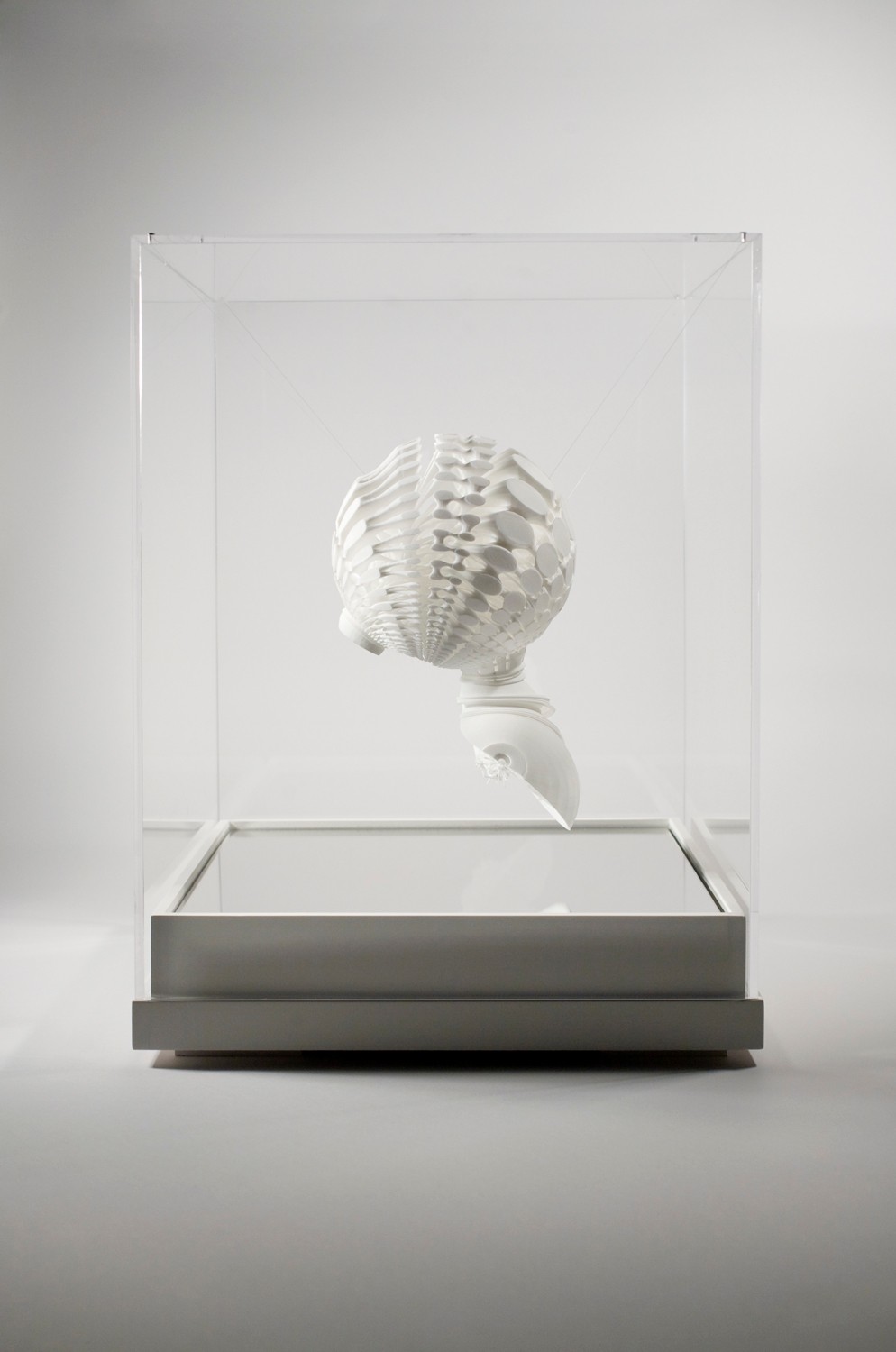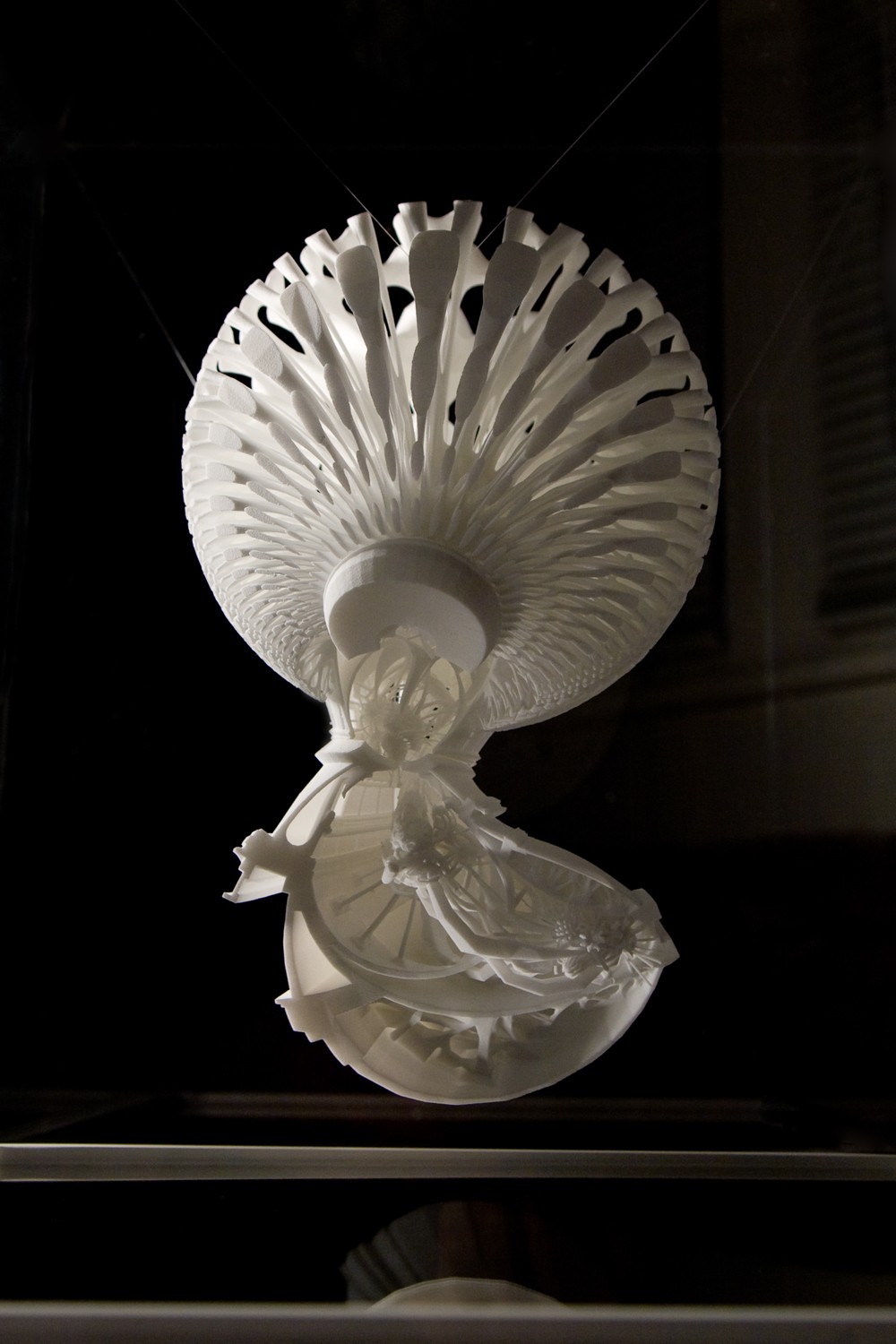Menu
Work
About
Contact
Inversive Embodiment uses a 4-dimensional translation of space to articulate the concept of soft malleable concepts of inverted space as a fully embodied architectural argument. The basis of this geometric translation is the mathematic theorem of inverse geometry, the study of a type of transformation of the Euclidean plane. These transformations preserve angles and map generalized circles into generalized circles, where a generalized circle means either a circle or a line (a circle with infinite radius). Many difficult problems in geometry become much more tractable when an inversion is applied. Here the object explores this complexity in a culturally driven background of the data construct of the author’s own body, derived by a series of Magnetic Resonance Scan and the iconic monumental construct of St. Paul’s Cathedral. Similar to these tractable approaches in mathematics, the spatial complexities emerging by a translation of iconographic qualities within a cultural artificial construct, are explored, valued, and articulated in the work.
#Installation
#3D printing
2011



